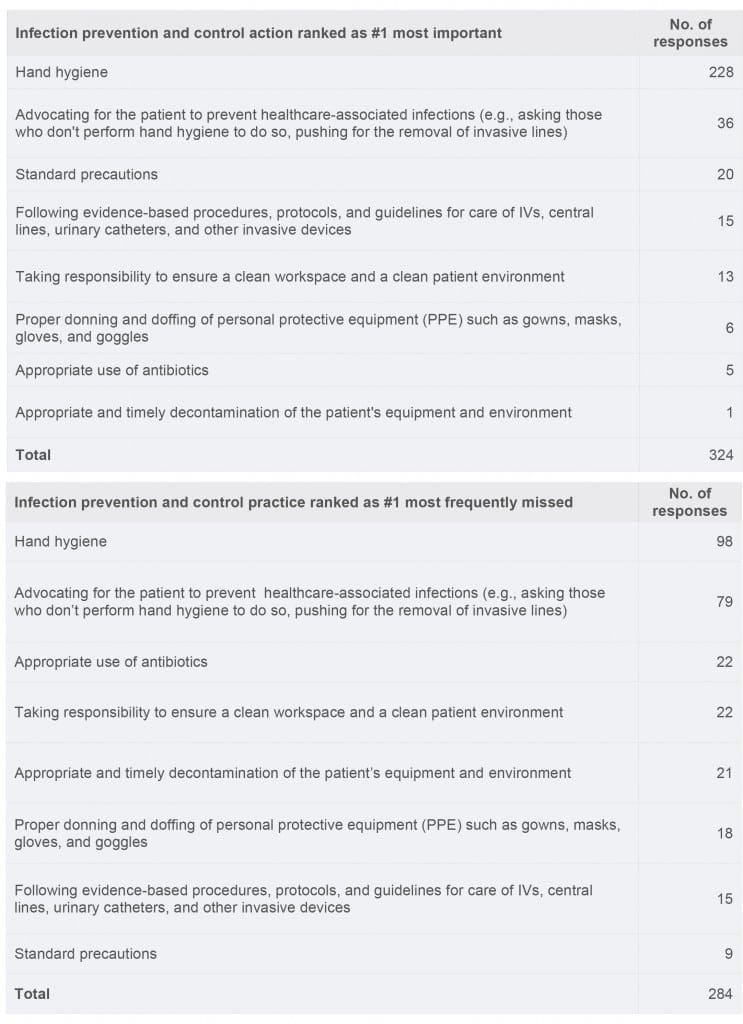Did you know that there are 75,000 deaths per year due to healthcare-associated infections (HAIs)? Infection prevention remains a critical aspect of nursing practice to control unnecessary morbidity and mortality, while providing high-quality nursing care. Interventions include using state-of-the-art equipment and personal protective gear, but hand hygiene remains the cornerstone for keeping HAIs at a minimum. Hand hygiene is not just for healthcare providers, but also for patients and visitors coming in contact with patients.
ANA meets APIC
In December 2014, the American Nurses Association (ANA) staff began its collaboration with the Association for Professionals in Infection Control and Epidemiology (APIC) to synergize efforts in scanning the environment of nursing practice to identify nursing priorities for infection prevention and recognize current gaps in infection prevention.
To learn what RNs think about infection prevention practices, ANA surveyed its members using the survey adopted from APIC. The descriptive electronic survey was administered during a 2-week period in June 2015. Respondents were asked to participate through email and listserv invitations. A total of 324 responses were received.
Survey results and recommendations
The survey showed that nurses believe hand hygiene is the most important action in preventing and controlling HAI as it pertains to their work environment. The survey also affirmed that the most frequent missed practice pertaining to infection prevention and control is advocating for patients in addition to hand hygiene. The survey participants worked in various settings, including but not limited to hospitals, skilled nursing care facilities, and ambulatory facilities. (See attached PDF or image below for results.)
By using existing resources developed by experts in infection prevention and published by ANA, APIC, and the Centers for Disease Control and Prevention (CDC) and following current practice guidelines in their workplaces, nurses cannot only evaluate and affirm their own practice, but ensure adequate and appropriate hand hygiene among the rest of the team as well.
It’s also important that organizational leadership supports team accountability for patients’ best interests and requires succinct, clear, concerted, intentional efforts in reinforcing hand hygiene to successfully minimize the number of HAIs. This is possible when there is leveling of hierarchy in healthcare teams, so that anyone on the team can approach fellow colleagues and reinforce hand hygiene as needed.
ANA encourages all RNs to begin the conversation about infection prevention in their workplace and to speak up when needed about hand hygiene and the importance of team accountability.
Click here to read American Nurse Today’s SPECIAL REPORT: Infection Prevention.
Selected references
Hand hygiene hurdles: how can we overcome them? Q & A with Timothy Landers. Prevention Strategist. Summer 2015. apic.org/Resource_/TinyMceFileManager/Periodical_Images/Hand_hygiene_QA.pdf
Magill S, Edwards JR, Bamberg W, et al. Multistate point-prevalence survey of health care-associated infections. N Engl J Med. 2014; 370:1198-208
Harpreet Gujral is director of weight loss surgery at Sibley Memorial Hospital in Washington, DC.



















